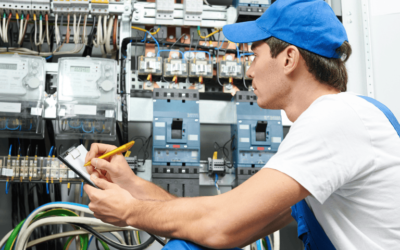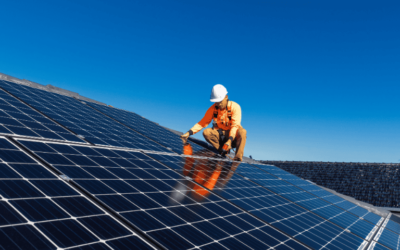This blog is part 2 of our lighting measurements blog and covers illuminance, luminance, lux, foot-candles, and how to measure light. If you missed part 1 of the blog, which covers lumens, luminous intensity, luminous flux, and their calculations you can read it by clicking here.
Illuminance
Illuminance is measured in lux and refers to the amount of light falling on a surface. The type of surface doesn’t affect the amount of light. The lux are the same for trees, rocks, and smooth indoor surfaces.
It’s easy to measure illuminance with a light meter. You can even install an app on your smartphone.
Definition of lux: Lx (lx) measures the amount of light hitting a surface. It lets you know how bright the light is falling on a surface. One lux is the same as one lumen per square meter of surface area.
Here’s the equation to measure the illuminance of a surface area.
- 1lx = 1lm / m²
Or you can use,
- 1lx = 1cd * sr / m²
- With 1lm = 1cd * sr
The above formula uses m² to represent the surface area.
Foot-Candles
The US customary and Imperial light measurement systems use the term foot-candle (fc) instead of lux. Foot-candle measure the amount of light on a surface, using lumens per square foot as the measurement.
One foot-candle equals around 10.764 lux and uses the following formula.
- 1fc = 1lm / ft²
If you know the lumen output and surface area, you can calculate the illuminance. When the concentrated beam has a 400 lumens luminous flux, it will illuminate 1 square meter of space with a 400 lux illuminance rating.
The equation will look like:
- lx = 400lm / 1m²
- lx = 400
Increasing the surface area to 2 square meters while leaving the luminous flux at 400 lumens produces a dimmer light as shown by this formula,
- x = 400lm / 2m²
- lx = 200
The formula shows how illuminance decreases over larger surface areas or greater distances. A light placed further away will not have the same illuminance as one placed close to the surface area.
You want to pay attention to illuminance when you are choosing lighting fixtures for office spaces.
Luminance
Luminance is measured in candela per square meter (cd/m²). It denotes how much light is reaching an object, along with the amount of light reflecting off the surface.
Simply put, luminance calculates how much luminous power is emitted from a surface at a specific viewing angle. Luminance is the light the human eye can see. Examples of luminance include traffic lights and flashing road signs.
To learn the calculations needed to find the lumens and candela, you will need to read part 1 of our lighting measurements blog. It is available to read here. We suggest starting with it first and then moving on to part 2.
How Do You Measure Light?
You can try measuring lumens using an app on your smartphone, but you aren’t going to get precise calculations. You need to use an integrating sphere connected to a spectrometer. You also need a computer with the right software to handle the various light measurements.
But there are other tools and calculations you can use for different light metrics.
Light Meters
You can measure certain light metrics using different types of meters.
- Lux meter: used to measure illuminance (lux or foot-candles)
- Intensity meter: used to measure luminous intensity (candela)
- Luminance meter: used to measure luminance
Lux meters are most commonly used, and often referred to as light meters. A lux meter measures the amount of light falling on a surface. These meters are helpful in the film and photography industries. The meters are also used to ensure public spaces are illuminated properly for safety.
Apps for Light Meters
You can find lux meter apps for Android and iOS systems.
iOS light meter apps:
- Pocket Light Meter (By Nuwaste studios)
- myLightMeter Free (By David Quiles)
Android light meter apps:
- LightMeter Free (By David Quiles)
- Light Meter (Borce Trajkovski)
- beeCam Light Meter (by FM.Bee Corp)
Lumens and Wattage
Luminous efficacy is the relationship between lumens and wattage. It measures how efficiently the light source converts electrical power into visible light. A unit of luminous efficacy is lm/W or lumens per watt.
Using the following equation, you can calculate luminous efficacy.
- luminous efficacy (lm/W) = luminous flux (lm) / wattage (W)
For example, if a 10 watt bulb produces 600 lumens the calculation will be as follows,
- 600lm / 10W = 60 lm/W
With both the lumens and luminous efficacy, you can calculate the wattage consumed.
wattage = lumens / lumens per watt hour
- 600lm / 60lm/W = 10W
The equation tells you the lamp uses 10 watts of electricity to produce 600 lumens of light.
You can also calculate the lumens of a lamp using its wattage and luminous efficacy in the same formula.
- lumens = wattage (lumens per watt hour)
- 10W * 60 lm/W = 600lm
Comparing Lumens
The number of lumens in a watt depends on the type of lamp. On average, incandescent light bulbs produce 15 lumens per watt compared to energy-efficient LED fixtures at 75 lumens per watt.
Here’s a brief chart showing the average lumens to watts conversion for common lamp types.
- LED light bulb efficacy ≈ 75 lumens per watt (lm/W)
- CFL light bulb efficacy ≈ 65 lumens per watt (lm/W)
- Halogen light bulb efficacy ≈ 20 lumens per watt (lm/W)
- Incandescent light bulb efficacy ≈ 15 lumens per watt (lm/W)
Lighting Upgrades with Action Services Group
Knowing how the lumens compare between the various types of lamps helps you choose the right ones for the space. This can seem like a labor-intensive process, and it can be without a lighting professional. To speak with a lighting specialist about your upcoming lighting project, contact Action Services Group by calling 610-558-9773, email [email protected], or schedule a call that fits your needs by clicking the button below.







































0 Comments